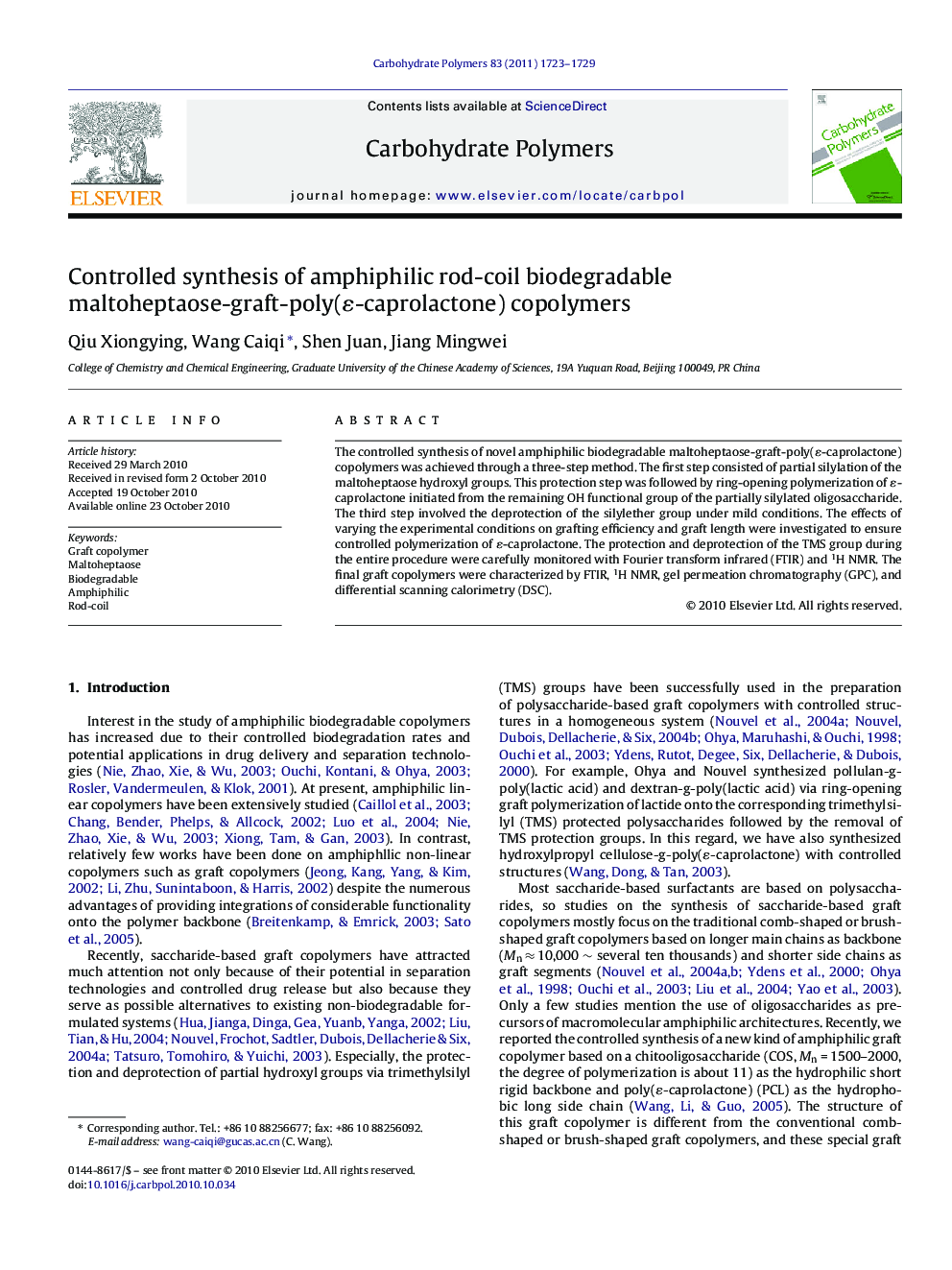| Article ID | Journal | Published Year | Pages | File Type |
|---|---|---|---|---|
| 1386813 | Carbohydrate Polymers | 2011 | 7 Pages |
The controlled synthesis of novel amphiphilic biodegradable maltoheptaose-graft-poly(ɛ-caprolactone) copolymers was achieved through a three-step method. The first step consisted of partial silylation of the maltoheptaose hydroxyl groups. This protection step was followed by ring-opening polymerization of ɛ-caprolactone initiated from the remaining OH functional group of the partially silylated oligosaccharide. The third step involved the deprotection of the silylether group under mild conditions. The effects of varying the experimental conditions on grafting efficiency and graft length were investigated to ensure controlled polymerization of ɛ-caprolactone. The protection and deprotection of the TMS group during the entire procedure were carefully monitored with Fourier transform infrared (FTIR) and 1H NMR. The final graft copolymers were characterized by FTIR, 1H NMR, gel permeation chromatography (GPC), and differential scanning calorimetry (DSC).
